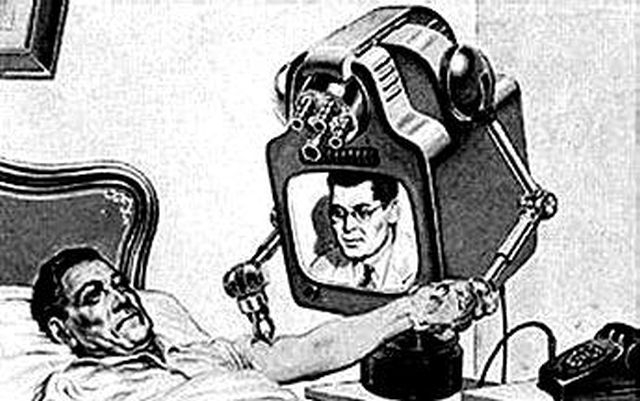Teledoctors: Changing Access to Health Care Providers
Teledoctors: Changing Access to Health Care Providers
Blog Article
Teledoctors: Bridging the Gap Between Individuals and Doctor
The emergence of teledoctors represents a considerable shift in the healthcare landscape, supplying services to long-lasting access problems dealt with by suppliers and people alike. By incorporating telemedicine right into standard methods, medical care systems can reach remote and underserved populaces, supplying vital medical consultations without the obstacles of range and travel. This paradigm change not just boosts person involvement but also enhances resource appropriation for companies. Nonetheless, the prevalent fostering of teledoctors increases important inquiries about the sustainability of such techniques and the effects for future health care delivery. What obstacles lie ahead in ensuring this version's efficiency and equity?
Surge of Telemedicine

The rise of telemedicine is likewise fueled by the requirement for economical health care. Health care systems globally are under stress to minimize expenses while keeping top quality care, and telemedicine provides a viable service. By lessening the need for physical gos to, telemedicine minimizes overhanging prices for medical care facilities and ultimately lowers the monetary burden on patients.
In Addition, the COVID-19 pandemic worked as a stimulant, increasing the adoption of telemedicine practices. Social distancing procedures and the demand to reduce direct exposure danger demanded a shift in the direction of remote examinations, prompting regulatory bodies to sustain and adjust telehealth solutions. This change has not only proven telemedicine's effectiveness but additionally its potential to develop as a staple element of modern-day health care systems.
Advantages for Patients
Largely, telemedicine boosts access, allowing patients in underserved or remote areas to get in touch with health care service providers without the requirement for extensive traveling. Telemedicine also supplies people the benefit of getting clinical guidance and treatment from the comfort of their homes, decreasing the time and expense associated with traveling to a medical care center.
Furthermore, telemedicine sustains continuity of treatment by helping with normal follow-ups and monitoring, which are vital for managing chronic problems. Clients can easily arrange appointments and access medical care services outside typical workplace hours, suiting their hectic way of livings. This versatility brings about enhanced person engagement and adherence to therapy plans, possibly leading to much better health and wellness results.
Furthermore, telemedicine can assist reduce the danger of infection transmission, an issue increased by the COVID-19 pandemic. By decreasing the requirement for in-person visits, people can stay clear of crowded waiting rooms and decrease exposure to transmittable diseases. Inevitably, telemedicine empowers individuals by providing prompt, efficient, and personalized medical care solutions.
Benefits for Service Providers
For health care companies, telemedicine offers considerable benefits that improve the efficiency and reach of their method. By leveraging digital modern technology, suppliers can expand their solutions to a wider group, including those in remote or underserved areas. This not just relieves geographical barriers but likewise maximizes client retention and procurement by making health care much more easily accessible.
With telemedicine, the need for physical room decreases, allowing companies to conserve on actual estate and operational expenditures. This flexibility can lead to raised individual assessments per day, thus increasing profits potential.
Telemedicine likewise fosters a much more collective environment for medical care companies. teledoctors. It allows smooth sharing of patient details amongst professionals, enhancing analysis precision and therapy end results. Additionally, digital systems can integrate with electronic wellness records (EHRs), boosting data precision and improving management tasks
Moreover, telemedicine boosts person fulfillment, which is important for provider online reputation and success. By supplying convenient and prompt treatment, suppliers can improve person commitment and involvement, additionally reinforcing the provider-patient partnership.
Conquering Difficulties
While telemedicine offers countless benefits for doctor, it additionally provides challenges that need cautious factor to consider. One considerable obstacle is guaranteeing information personal privacy and protection. As person info is transferred electronically, the threat of data violations boosts, necessitating robust cybersecurity steps. Healthcare companies need to comply with rigorous guidelines like HIPAA to protect sensitive information, thereby requiring financial investment in safe systems and recurring staff training.
An additional challenge is the electronic divide, which can prevent accessibility to telemedicine solutions. Not all patients have equivalent accessibility to the needed innovation or web connectivity, especially those in underserved or rural locations. This difference can intensify existing health care inequalities, making it vital for providers to discover alternate options, such as collaborations with neighborhood companies, to bridge this gap.
In addition, there are constraints in carrying out checkups remotely. Certain problems require in-person analysis, highlighting the requirement for a hybrid version that integrates telemedicine with standard check outs. When telemedicine is proper and guaranteeing seamless shifts in between in-person and virtual treatment., providers have to navigate these obstacles by establishing protocols to determine.
Future of Healthcare
The future of healthcare is positioned for a transformative evolution, driven by the rapid combination of modern technology and advancement. This not just enhances individual convenience but additionally expands access to health care, specifically in underserved and rural locations.
Man-made knowledge (AI) and artificial intelligence are also established to play critical functions. These modern technologies can assess substantial amounts of information, offering anticipating understandings into patient health and wellness, enhancing analysis accuracy, and customizing treatment strategies. AI-driven devices can boost medical care service providers' abilities, resulting in more educated decision-making and much better individual results.
Moreover, wearable innovation and Web of Clinical Points (IoMT) devices are reinventing person interaction and proactive health administration. These devices make it possible try this site for continual wellness tracking, enabling for early detection of prospective problems and timely treatments.
As these technologies continue to advancement, they assure to create a more effective, easily accessible, and patient-centric medical care system, eventually bridging the space in between individuals and doctor. - teledoctors
Conclusion
Teledoctors are changing health care by substantially enhancing access and efficiency through remote assessments. This improvement supports clients in underserved locations by giving prompt clinical advice without needing physical gos to, thus boosting person interaction and continuity of care. Doctor benefit from much more reliable time monitoring and boosted cooperation possibilities. In spite of obstacles such as regulatory issues and technical obstacles, the future of healthcare appears effective and significantly inclusive due to the assimilation of telemedicine into typical care designs.

As telemedicine continues to improve medical care distribution, clients stand to acquire dramatically from this improvement. Mainly, telemedicine boosts ease of access, allowing clients in underserved or remote areas to consult medical care service providers without the need for comprehensive travel. Telemedicine additionally offers patients the ease of receiving clinical advice and treatment from the comfort next of their homes, decreasing the time and expense linked with taking a trip to a medical care center.
Ultimately, telemedicine empowers patients by offering prompt, effective, and customized healthcare services.
Report this page